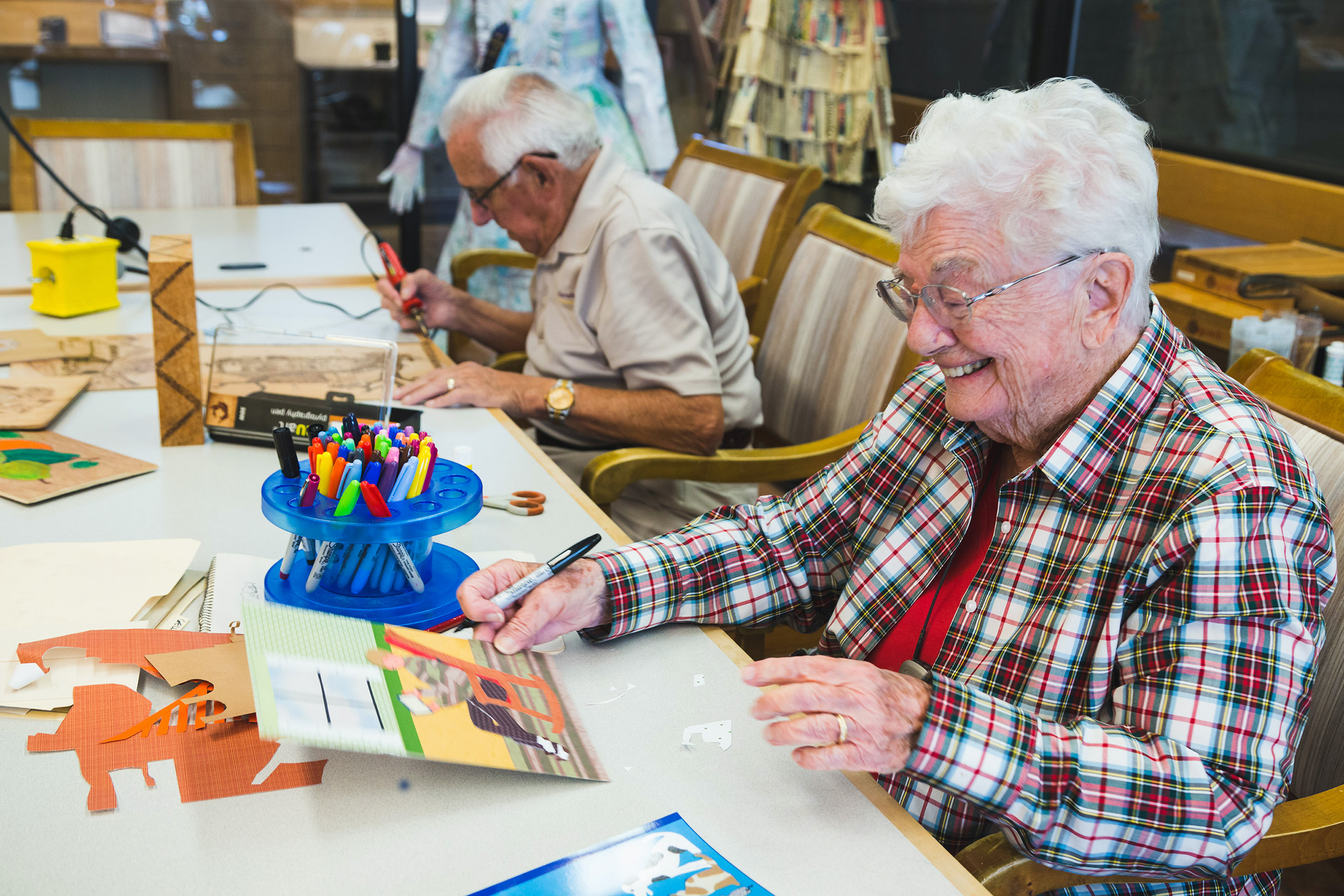Willamette View Proves the Benefits of Creativity at Any Age

When it comes to art, Willamette View shows creativity can blossom at any time.
Comfortably situated just south of Portland, Willamette View is a Life Plan Community (also known as a Continuing Care Retirement Community) that distinguishes itself with its active residents and engaged staff. It’s renowned for its diverse selection of residential options, and visitors and residents alike laud the property’s breathtaking view.
But one feature that truly helps separate Willamette View from other senior communities is the onsite artworks studio, where residents indulge their creative side. The studio features a variety of media, making artistic pursuits easy for anyone to work into their everyday schedule.
According to Sally Giles, who holds a master’s degree in art therapy and counseling, artworks operates with three goals in mind. The first supports overall resident wellness by offering engaging activities, including open studio time and visits to area galleries, while the second fosters a sense of community among residents. The studio’s third goal is to promote the achievement of personal goals through individualized, private art therapy.
“Most of us have never done art before. But at Willamette View, people work together, and we inspire each other.”
Ruthanne Moore, Willamette View resident
The art therapy program offers residents a highly customizable opportunity for personal growth. “Art therapy is very individualized,” says Kristen Larsen, who also has a master’s degree in art therapy and counseling and works alongside Giles at Willamette View. “We work with each person to determine what their goals are, what their strengths are and what their interests are.” From there, residents can explore the specialties to which they’re most drawn — options at Willamette View include everything from painting and drawing to collage and jewelry-making.

Resident Ruthanne Moore, 96, has explored several avenues of artistic expression since moving to Willamette View in 2001. She’s created life-size dresses entirely from paper, and has delved into ceramics, watercolors and more. Most notable about Moore’s experience with artworks is that she had never worked with these media prior to moving to Willamette View. “Most of us have never done art before,” Moore says. “But at Willamette View, people work together, and we inspire each other.”
Another pair of Willamette View residents, husband-and-wife duo Dan Rego, 90, and Nilda Rego, 91, echo this appreciation of the studio’s ability to foster relationships. “I like talking to all of the other people that also do artwork,” Nilda says. “The studio lets us exchange ideas as people go in and out.”

Much like Moore, neither Nilda nor her husband had spent much time perfecting their artistic skills before relocating to Willamette View. “I didn’t do anything before I moved here,” Dan said. “I didn’t know I could.” But Giles and Larsen helped ease the couple into the world of art, and from there, their enthusiasm only grew.
“Sally and Kristen really know how to keep a person interested,” Dan says. “There isn’t anything you might want to do that they can’t help you do.”
Willamette View’s art therapy program has seen great success when used to promote the wellbeing of residents with memory loss. “It’s especially powerful for people who aren’t able to communicate in the way they used to,” Giles explains, “and for people who might have trouble expressing themselves with words.”
Giles also notes that the positive effects of Willamette View’s art therapy program aren’t always clear for all to see, due to its more intimate nature, but she’s witnessed the positive impact it has made firsthand. “We think that using art for fostering healing and community is really important and helpful for people,” Giles says.
The therapists believe one of the most valuable aspects of artworks is that the studio wasn’t designed to only cater to those who have long known and loved art — it’s for anyone seeking a fulfilling pastime.
“Our programming is accessible to anyone, and that’s really one of the most rewarding parts of it — seeing people realize, ‘Wait a minute, I can be creative! I can express myself this way! This is fun, and it feels good!’”
Sally Giles, art therapist